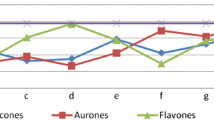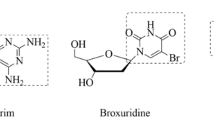Abstract
A series of eight fatty imidazolines were synthesized under microwave-assisted conditions using different fatty acids namely octyl, decyl, dodecyl, tetradecyl and octadecyl, mixed fatty acids prepared from Sterculia foetida (containing cyclopropene-rich fatty acids), coconut (containing medium-chain-rich fatty acids), palm (containing saturated-rich fatty acids) and sunflower (containing unsaturated-rich fatty acids). Coconut, sunflower and non-edible oil S. foetida-based imidazolines were synthesized for the first time. The fatty imidazolines were evaluated for anti-fungal activity and found to be good to excellent (MIC, 4.68–18.75 μg ml−1) against the tested Candida strains as compared with fluconazole (MIC, 16–64 μg ml−1) as standard. The fatty imidazolines also exhibited excellent to moderate anti-bacterial activity (MIC, 4.68–75 μg ml−1) against Staphylococcus aureus MTCC 96, S. aureus MLS 16 MTCC 2940 and Pseudomonas aeruginosa MTCC 2453 as compared with neomycin (MIC, 18.75 μg ml−1) as standard. The cytotoxic evaluation of the imidazolines against different cancer cell lines such as HeLa (Human Cervical Cancer Cell line), A549 (Human Alveolar Adenocarcinoma Cell line), MDA-MB-231& MCF7 (Human Breast Adenocarcinoma Cell line) and Neuro2a (Mouse neuroblastoma cell line) showed excellent cytotoxicity for dodecyl (3b), tetradecyl (3c), octadecyl (3d) and coconut (3f)-based imidazolines. Sunflower-based imidazoline (3g) exhibited good anti-cancer activity towards A549, Neuro2a and palm-based imidazoline (3h) towards HeLa, A549 and MCF-7 cell lines.

Similar content being viewed by others
References
Amsterdam D (1996) Susceptibility testing of antimicrobials in liquid media. In: Lorian V (ed) Antibiotics in laboratory medicine, 4th edn. Williams and Wilkins, Baltimore
Bajpai D, Tyagi VK (2007) Synthesis of fatty imidazolines based on palm fatty acids and diethylenediamine through microwave irradiation and their characterization. Heterocycl Commun 13:377–380
Bajpai D, Tyagi VK (2008) Microwave synthesis of cationic fatty imidazolines and their characterization. J Surfactants Deterg 11:79–87
Baltork M, Alibeik MA (2003) Microwave-assisted facile and convenient synthesis of imidazolines. Bull Korean Chem Soc 24:1354–1356
Firestone D (2010) Official methods and recommended practices of the Americal Oil Chemist’s Society, 5th edn. AOCS Press, Chamaign (Methods Te 2a-64 and Tf 2b-64)
Grammitt MR, Katrizky AR, Boulton AJ (1989) In Advances in heterocyclic chemistry. Academic, New York, p 241
Ismail AA, Hafiz AA, EI-Awady MY, Habib AO (2010) Some imidazoline derivative as corrosion inhibitors. J Surfactants Deterg 13:247–254
Kanjilal S, Sunitha S, Reddy PS, Kumar KP, Murthy USN, Prasad RBN (2009) Synthesis and evaluation of micellar properties and antimicrobial activities of imidazole-based surfactants. Eur J Lipid Sci Technol 111:941–948
Karlheinz H (2000) Fats and oils as oleochemical raw materials. Pure Appl Chem 72:1255–1264
Khabnadideh S, Rezaei Z, Khalafi-Nezhad A, Bahrinajafi R, Mohamadi R, Farrokhroz AA (2003) Synthesis of N-alkylated derivatives of imidazole as antibacterial agents. Bioorg Med Chem Lett 13:2863–2865
Miller DK, Griffiths E, Lenard J, Firestone RA (1983) Cell killing by lysosomotropic detergents. J Cell Biol 97:1841–1851
Mosmann T (1983) Rapid colorimetric assay for cellular growth and survival; application to proliferation and cytotoxicity assays. J Immunol Methods 65:55–63
Mukherjee A, Kumar S, Seth M, Bhaduri AP (1989) Synthesis of 1-methyl-4-nitro-5-substituted imidazole and substituted imidazolothiazole derivatives as possible antiparasitic agents. Ind J Chem 28B:391
Norman SM, Bennett RD, Ploing SM, Maier VP, Nelson MD (1986) Paclobutrazol inhibits abscisic acid biosynthesis in Cercospora rosicola. Plant Physiol 80:122–125
Palou RL, De Paz G, Marin-Cruz J, Zepeda LG (2003) Synthesis of long chain 2-alkyl-1-(2-hydroxy ethyl)-2-imidazolines under microwave in solvent free conditions. Synlett 12:1847–1849
Popa I, Lupu A, Parausanu V, Scorteanu G (2001) Ammonium quaternary salts of 1, 2 disubstituted imidazoline derivatives. Presented in 12th international conference on Chemistry and Chemical Engineering
Wilkinson CF, Hetnarski K (1974) Structure-activity relationships in the effects of 1-alkylimidazoles on microsomal oxidation in vitro and in vivo. Biochem Pharmacol 23:2377–2386
Author information
Authors and Affiliations
Corresponding author
Electronic supplementary material
Below is the link to the electronic supplementary material.
Rights and permissions
About this article
Cite this article
Satyavani, T., Mohini, Y., Karuna, M.S.L. et al. Synthesis and biological evaluation of fatty imidazolines. Med Chem Res 23, 3617–3623 (2014). https://doi.org/10.1007/s00044-014-0936-x
Received:
Accepted:
Published:
Issue Date:
DOI: https://doi.org/10.1007/s00044-014-0936-x




